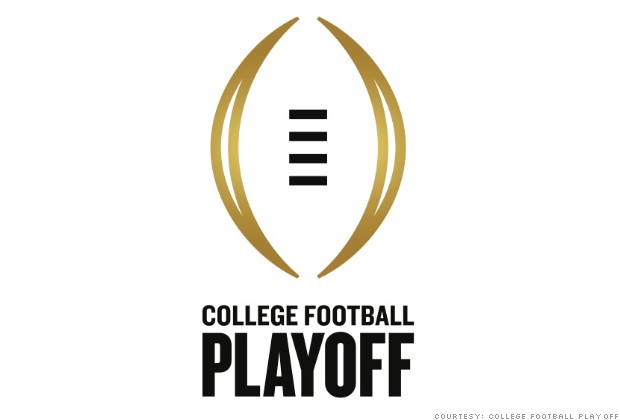The push for absolute power over college football signaled one month ago is well underway, with evidence now on full display.
The Big Ten and SEC have proposed expanding the College Football Playoff to 14 teams starting with the 2026 season and assigning guaranteed bids to each major conference, but not in equal amounts.
They want more, of course. They reportedly want three automatic qualifier spots (AQs) apiece every year, with the Big 12 and ACC receiving two each.
On the surface, the 3-3-2-2 proposal sounds bad and looks worse for the Big 12 and ACC, codifying them as lesser than their peers in the most public of fashions. But they should take the deal in a heartbeat, then go celebrate together.
Before we plunge into the details of the proposal, and why it’s actually good for the Big 12 and ACC, context is required.
The entirely predictable leverage play by the Big Ten and SEC came three weeks after they announced a joint advisory board to “address the significant challenges facing college athletics.”
One of those challenges is the college football postseason — specifically, reconstructing the CFP to suit the needs of two conferences that have added a slew of brand names in recent years.
Postseason expansion is inevitable everywhere. Since the CFP created a working group back in Dec. 2019 to create models for an eight- or 12-team event, the NFL has expanded its playoff to 14 teams and the NBA has created the Play-In Tournament.
Successful businesses don’t shrink, they grow. And college football is a very, very successful business, especially for the Big Ten and SEC.
They have grown to 18 and 16 teams, respectively, with the additions of the West Coast quartet (into the Big Ten) and Texas and Oklahoma (to the SEC). The format devised years ago, and approved in the fall of 2022, no longer fits. It’s a medium; the Big Ten and SEC wear a large.
The CFP is locked into a 12-team event for the 2024 and 2025 seasons. But starting in 2026, there is no format, no governance structure, no revenue distribution model and no media contract.
That leaves Big Ten commissioner Tony Petitti and SEC commissioner Greg Sankey — they are effectively the sport’s co-commissioners — with a blank slate on which to jointly create an expanded playoff that satisfies their ravenous membership.
The initial proposal for a 14-team playoff reportedly called for each of the two heavyweight leagues to receive four AQ bids. That was excessive, sure, but negotiations usually start with excessive asks.
From there, the discussions have moved to three AQ spots for both the SEC and Big Ten, two for the ACC and Big 12, one for the best team from the remaining leagues (i.e., the Group of Five) and three at-large selections, which would include Notre Dame in the years it meets certain qualification criteria.
Officials have termed that the 3-3-2-2-1-3 model. For the purposes of our discussion about guaranteed bids for the four power conferences, we will simply use 3-3-2-2.
Why should the Big 12 and ACC accept a proposal that defines them as lesser entities than the Big Ten and SEC?
Three reasons:
*** The valuation
From a competitive standpoint (i.e., access), the 3-3-2-2 format assigns the ACC and Big 12 two-thirds the value of the Big Ten and SEC. That’s a greater valuation than they would receive in any other metric central to the sport.
Once all the schools switch conferences this summer, the Big 12 and ACC won’t have two-thirds as many major college football brands as the Big Ten and SEC.
They won’t have two-thirds the TV ratings or two-thirds the media rights revenue. (The total will be closer to half once all the new TV deals kick in.)
And they certainly won’t claim two-thirds of the CFP berths previously earned.
When you tally up the number of playoff bids for the conferences over the past 10 years using their reconfigured alignments, here are the totals (with participating teams):
SEC: 17 (Alabama, Georgia, LSU, Texas, Oklahoma)
Big Ten: 12 (Ohio State, Michigan, Michigan State, Oregon and Washington)
ACC: seven (Clemson and Florida State)
Big 12: two (TCU and Cincinnati)
Notre Dame: two
And yet, the 3-3-2-2 format provides them with a two-thirds valuation.
*** The alternative
If the 3-3-2-2 proposal is eventually discarded, possible alternative scenarios would 1) provide two AQs each to the Big Ten and SEC and one each to the ACC and Big 12 or 2) eliminate AQ bids for everyone.
Both scenarios are worse, especially for the Big 12, because it has no equivalents of Florida State and Clemson.
In a 2-2-1-1 format, the ACC and Big 12 could very well receive just one bid (the AQ), because their No. 2 teams would compete annually in a battle royal for at-large berths against the Big Ten and SEC bluebloods, not to mention Notre Dame.
And in a format with no guaranteed bids, the Big Ten or SEC would gobble up at least four and possibly five spots.
Both scenarios are worse for the ACC and Big 12 because of the likelihood that, in an average year, they would not generate two playoff-worthy teams.
One of them might, but not both.
They are in this arm-in-arm. Two guaranteed spots for each is a good deal.
*** The future
Just as the 12-team format seemingly has become a two-year bridge to the playoff becoming a 14-team event, so will 14 serve as a bridge to the inevitable 16-team field.
The negotiations currently unfolding are partly about the present and partly about the event’s evolution.
If the ACC and Big 12 secure two guaranteed bids, they will be better positioned when the 16-team format is created in three or five years. Anything less, and they would begin those discussions in a weaker relative position.
Because one thing is certain, folks: The power shift to the Big Ten and SEC happening in real time will increase exponentially as they maximize advantages in brand power, revenue, recruiting prowess and media platforms.
The ACC and Big 12 don’t have much leverage, but they have more now than they will in the second half of the decade.
There is one complication that must be addressed, however. According to a Yahoo report, the Big Ten and SEC want “exclusive rights on the two first-round byes” each year — the No. 1 and 2 seeds in the 14-team field — regardless of how the regular season plays out.
In that scenario, a three-loss SEC champion could be seeded ahead of an undefeated ACC champion.
Yes, the ask is galling, and it would damage the CFP and, therefore, the sport at large.
(The playoff will eventually overshadow the regular season much as March Madness overshadows college basketball’s regular season, but that’s a different discussion.)
We wonder if the push for top-seed exclusivity is, like the initial ask for four guaranteed bids, merely a negotiating tactic designed to enhance leverage for the Big Ten and SEC in other aspects of the discussions (CFP governance structure and/or revenue distribution, for example).
Regardless, the Big 12 and ACC can never accept a format in which their champions would have no access to the No. 1 and 2 seeds, even with an undefeated record.
The threat of the SEC and Big Ten breaking away and forming their own two-conference playoff looms in the background of the negotiations. If they attempt to tie the 3-3-2-2 AQ format to top-seed exclusivity, the Big 12 and ACC should call their bluff. Tell them to pound sand.
It’s all a negotiation, and the ACC and Big 12 must pick their spots to stand firm.
They cannot allow the Big Ten and SEC to have four automatic bids.
They cannot allow the two leagues to lock down the top-two seeds.
Give on revenue. Give on governance. Give on some other aspect of the format. But take the 3-3-2-2 format, then pop the champagne.
*** Send suggestions, comments and tips (confidentiality guaranteed) to pac12hotline@bayareanewsgroup.
*** Follow me on Twitter: @WilnerHotline
*** Pac-12 Hotline is not endorsed or sponsored by the Pac-12 Conference, and the views expressed herein do not necessarily reflect the views of the Conference.
Related posts:
 Wilner Mailbag -DEFCON 1 realignment scenario, should Oregon, Washington, UCLA and USC leave the conference?
Wilner Mailbag -DEFCON 1 realignment scenario, should Oregon, Washington, UCLA and USC leave the conference?

(AP Photo/Marcio Jose Sanchez)
Business of Sports – Updated Power Five revenue projections show Pac-12 deficit expanding as COVID hits, ACC Network grows and Big Ten, SEC rake in the cash
(Michael Malone/Bay Area News Group)
Wilner Hotline – Pac-12 to jump-start media rights negotiations after thunderbolt from Los Angeles VIDEO – Thursday July 7th Jon Wilner and Brad chop it up on Pac-12 future
VIDEO – Thursday July 7th Jon Wilner and Brad chop it up on Pac-12 future
Jon Wilner
Jon Wilner has been covering college sports for decades and is an AP top-25 football and basketball voter as well as a Heisman Trophy voter. He was named Beat Writer of the Year in 2013 by the Football Writers Association of America for his coverage of the Pac-12, won first place for feature writing in 2016 in the Associated Press Sports Editors writing contest and is a five-time APSE honoree.
